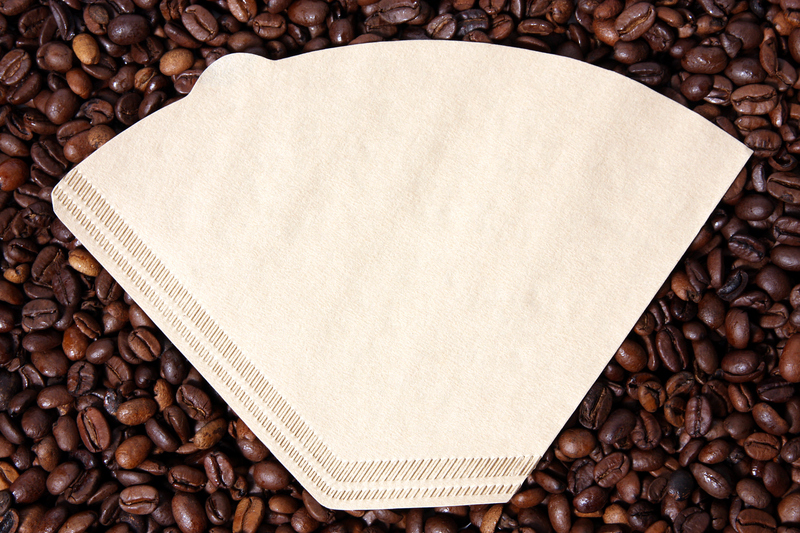Step-by-Step Guide to Erasing Burnt Residue from Your Stovetop
Posted on 26/05/2025
Step-by-Step Guide to Erasing Burnt Residue from Your Stovetop
Nothing makes a kitchen look untidy quite like stubborn burnt-on stains on your stovetop. Whether you love to cook or only use your stove for the occasional meal, burnt residue is a common and unsightly problem. Thankfully, with a little effort and the right techniques, you can restore your stovetop to its former sparkle. In this comprehensive, SEO-optimized guide, you'll discover the most effective methods for erasing burnt residue from your stovetop--no matter what material it's made from.

Understanding Burnt Residue on Your Stove
Before you can effectively remove burnt stains from your cooktop, it's essential to understand what causes them. Frequent causes include spilled food, boiling over liquids, or oil splatters that aren't cleaned up quickly. Over time, these substances bake onto the surface, leaving stubborn black or brown patches that regular wiping can't remove.
- Gas stove tops: Usually made of stainless steel or enamel, these tend to get residue around burners and grates.
- Electric coil stovetops: Burnt residue can build up under the coils and on the drip pans.
- Glass or ceramic cooktops: These smooth surfaces show burnt-on food and stains clearly but require gentle handling to avoid scratches.
Why Regular Cleaning Matters
Maintaining a clean stove surface is more than cosmetic. Burnt-on residue can cause:
- Unpleasant odors during cooking
- Reduced stove efficiency and uneven heating
- Potential damage to stove components over time
- A higher risk of fire hazard
That's why erasing burnt residue as soon as possible is essential for both performance and safety. Let's break down the exact steps to achieve a pristine cooktop, regardless of the stubbornness of the stains.
What You Need for Effective Stovetop Cleaning
Before starting the stove stain removal process, assemble the right tools and cleaners. Here's what you'll need:
- Non-abrasive sponges or microfiber cloths
- Baking soda (a gentle but effective scrubbing agent)
- White vinegar (helps dissolve mineral deposits and grease)
- Lemon juice (adds cleaning power and a fresh scent)
- Dish soap
- Plastic scraper or old credit card (for stubborn buildup on glass tops)
- Rubber gloves (for hand protection)
- Optional: Commercial stove-top cleaner (for tough stains)
Step 1: Safety First--Turn Off and Cool Down
Always ensure your stovetop is completely turned off and cool to the touch before cleaning. This prevents burns and ensures cleaning solutions don't evaporate too quickly. If cleaning grates and burners, remove them carefully and allow them to cool.
Step 2: Remove Loose Debris
With a dry cloth or paper towel, wipe away any loose crumbs or food debris from the surface. This makes it easier to focus on the stuck-on burnt areas and prevents further scratching.
Step 3: Apply a Soak Solution
For *,encrusted and stuck burnt residue,* soaking is often the most effective first move. Create a soaking solution by mixing:
- One part baking soda to one part water (to make a paste)
- Add a splash of dish soap for extra grease-cutting power
Gently spread the paste over the burnt residue, especially the most stubborn spots. For glass or ceramic cooktops, avoid covering the electrical components or control panel. Allow the solution to sit for at least 15-20 minutes--the longer, the better for tough stains.
Step 4: Scrub with Care
After soaking, gently scrub the affected areas using a non-abrasive sponge or microfiber cloth. Apply small, circular motions with minimal pressure at first. For glass stoves, use a plastic scraper or an old credit card held at a 45-degree angle to lift off, rather than scratch, the residue. Never use metal scouring pads, steel wool, or abrasive powders, as these can create permanent scratches or cloudiness.
Best Scrubbing Tools for Stubborn Burnt Residue
- Melamine foam sponges (like Magic Erasers): Strong but gentle on surfaces
- Soft-bristle brush: Useful for tough corners around burners and dials
- Microfiber towel: Excellent for wiping away loosened grime
Step 5: Use Vinegar for Extra Cleaning Power
White vinegar is a potent natural cleaner. Not only does it cut through grease, but it also helps to dissolve mineral deposits and food acids. Fill a spray bottle with a solution of:
- Equal parts white vinegar and water
Liberally mist the surface, focusing on the burnt-on spots. Let it sit for 5-10 minutes, then wipe away with a fresh cloth. This will lift any remaining residue and neutralize odors. Repeat as needed for deeply embedded stains.
Step 6: Tackle Persistent Stovetop Burnt Residue
Some burnt stains may be more persistent, especially if left unaddressed for weeks or months. If all else fails, try these advanced techniques:
- Baking Soda & Lemon Paste: Combine baking soda with fresh lemon juice to form a fizzing paste. Apply to stubborn areas, let sit for 10-15 minutes, then scrub gently. The combination of acid and the mild abrasive action works wonders.
- Commercial Cream Cleansers: Use a specialized glass stovetop cleaner or a non-abrasive cream cleanser. Follow manufacturer instructions precisely. Always do a spot test first to ensure no discoloration.
- Razor Blade (For Glass Cooktops Only): Hold a flat razor blade at a low angle and carefully scrape off remaining residue. Use extreme caution--this method is only recommended for glass or ceramic and should be performed gently to avoid scratches.
Pro Tip: Steam Away the Grime
For particularly tough burnt grease, steam can help. Place a damp cloth on the stovetop and pour boiling water over it (avoid electrical parts). After the steam loosens the grime, wipe away with a clean towel. This method is especially effective for large, stubborn build-ups.
Step 7: Rinse and Dry
Once you've erased the burnt residue, it's important to wipe away any cleaner remnants. Use a clean, damp sponge or microfiber cloth to rinse the area. Follow with a dry towel to polish the surface and remove streaks.
Preventing Future Burnt Residue on Your Stovetop
The best way to fight burnt-on stains is by preventing them in the first place. Here are some helpful habits to adopt:
- Wipe up spills promptly--immediately after each use, once the surface has cooled
- Use drip pans or liners below burners (for gas and electric coil stoves)
- Avoid cooking on high heat unless necessary--lower temperatures reduce splatter and boil overs
- Perform a weekly deep clean to catch residue before it becomes burnt-on
- Keep an all-purpose spray and microfiber cloth nearby for quick spot cleans
Special Care Instructions for Every Stovetop Type
Gas and Enamel Stove Tops
- Remove grates and burner caps before cleaning
- Soak removable parts in warm, soapy water for 20-30 minutes, then scrub with a soft brush
- For stubborn grease, sprinkle baking soda then spray with vinegar; let it foam, then wipe clean
Electric Coil Stove Tops
- Make sure the stove is unplugged
- Remove coils--do not immerse them in water. Wipe with a damp cloth and mild soap
- Clean drip pans in soapy water; for tough stains, let them sit with baking soda paste before rinsing
Glass & Ceramic Cooktops
- Use only non-abrasive cleaners and tools
- Avoid using excessive water around electrical components
- Use a glass cooktop polish to restore shine and add a protective layer
Common Mistakes to Avoid When Cleaning Burnt Stovetops
Even with the right intention, it's easy to accidentally damage your stove. Avoid these pitfalls:
- Using steel wool or abrasive pads, which can scratch and dull your cooktop
- Applying harsh chemicals not designed for kitchen surfaces--these can discolor or damage finishes
- Scraping aggressively without softening the residue first
- Leaving moisture on electrical components

When to Call a Professional for Burnt Stovetop Stains
If repeated home cleaning methods still leave stubborn stains or if the residue has become fused with the cooktop surface, it might be time to **consult a professional appliance cleaning service**. This is especially critical if you're dealing with delicate or expensive stovetops and want to avoid voiding a warranty.
Summary: The Best Ways to Remove Burnt Residue from Your Stovetop
A clean stovetop transforms your whole kitchen and makes cooking more enjoyable. With these tried-and-true methods for erasing burnt residue, plus smart preventive habits, you can keep your stove looking spotlessly clean. Remember:
- Always let the stovetop cool before you clean
- Use a combination of soaking, scrubbing, and vinegar rinses for best results
- Avoid abrasive tools and harsh chemicals
- Practice regular maintenance to prevent burnt-on messes in the future
By following this step-by-step guide, your stovetop can maintain its shine and cooking performance for years to come. Happy cleaning!




 Dry Carpet Cleaning
Dry Carpet Cleaning
 Mattress Cleaning
Mattress Cleaning
 Leather Sofa Cleaning
Leather Sofa Cleaning